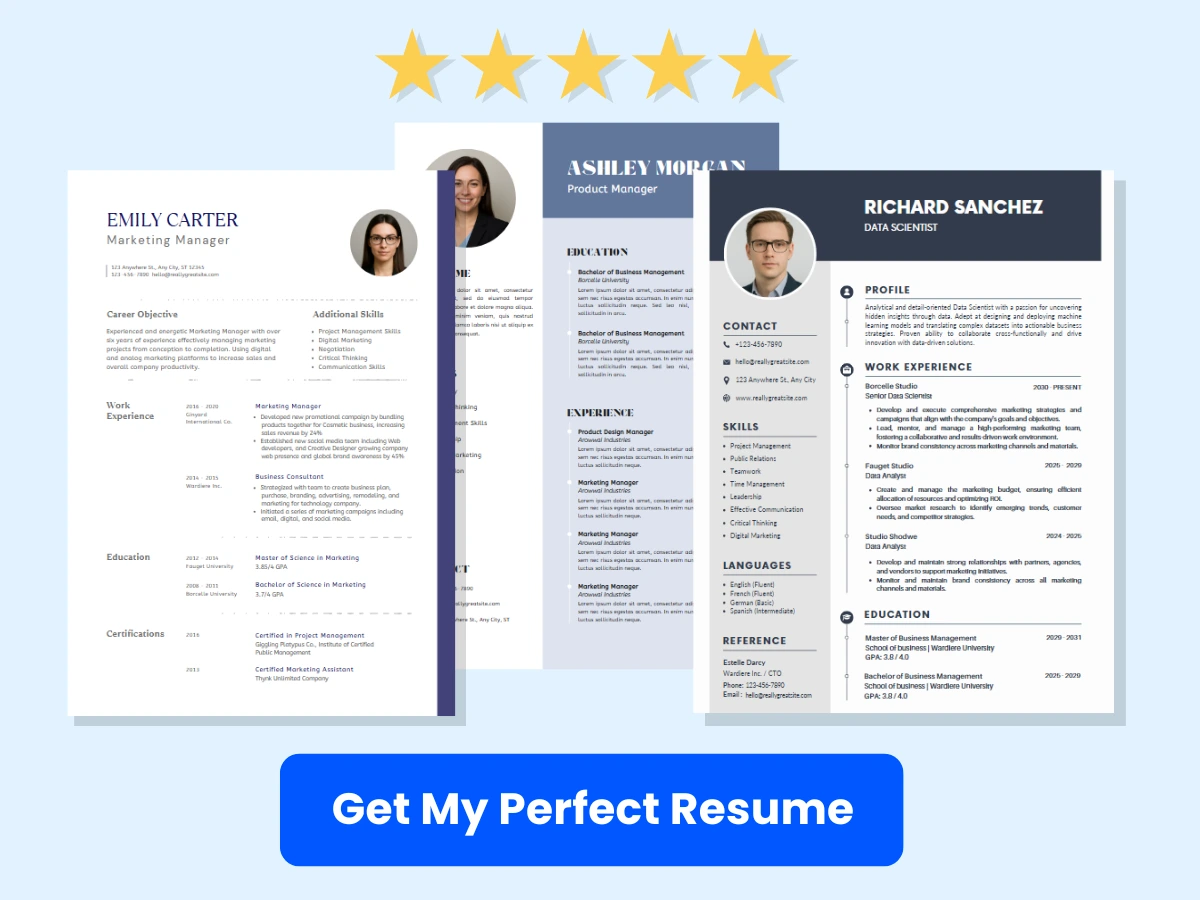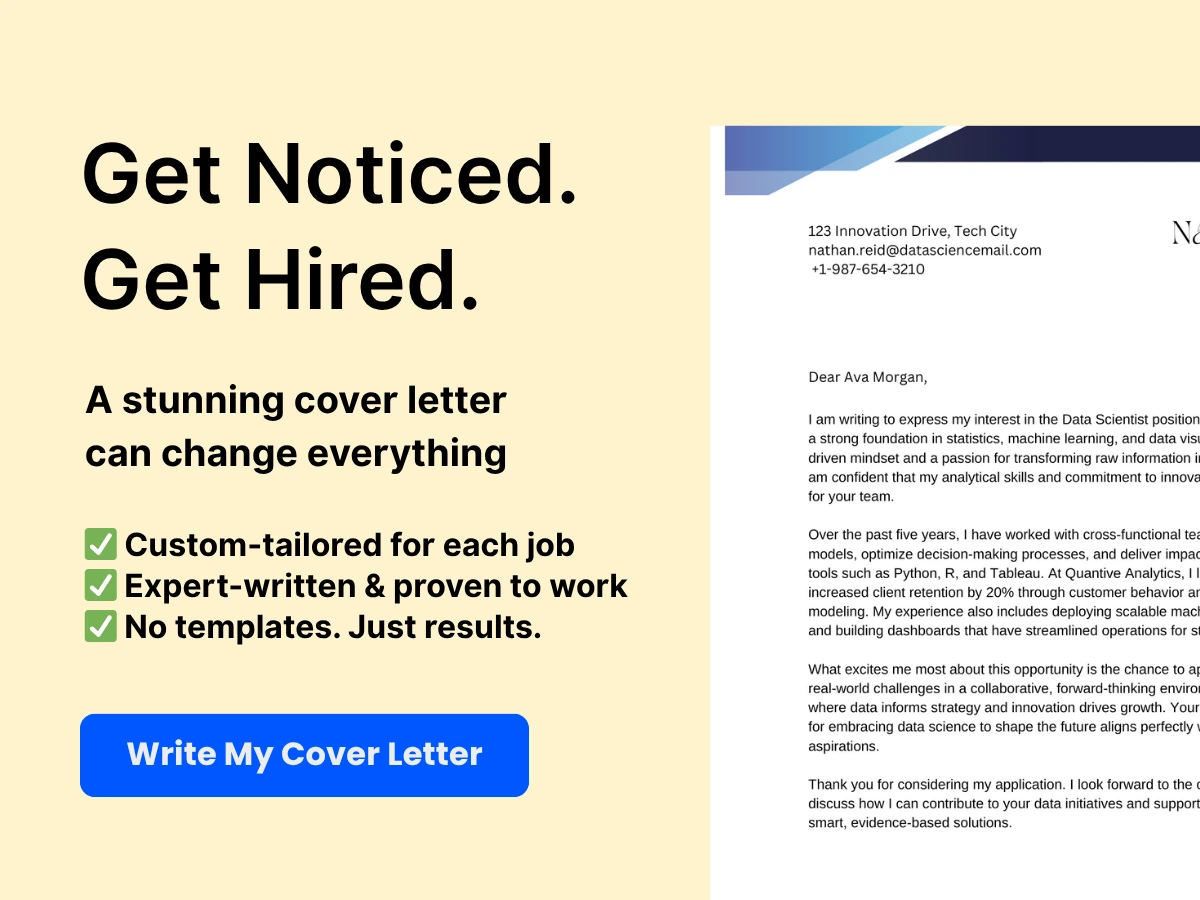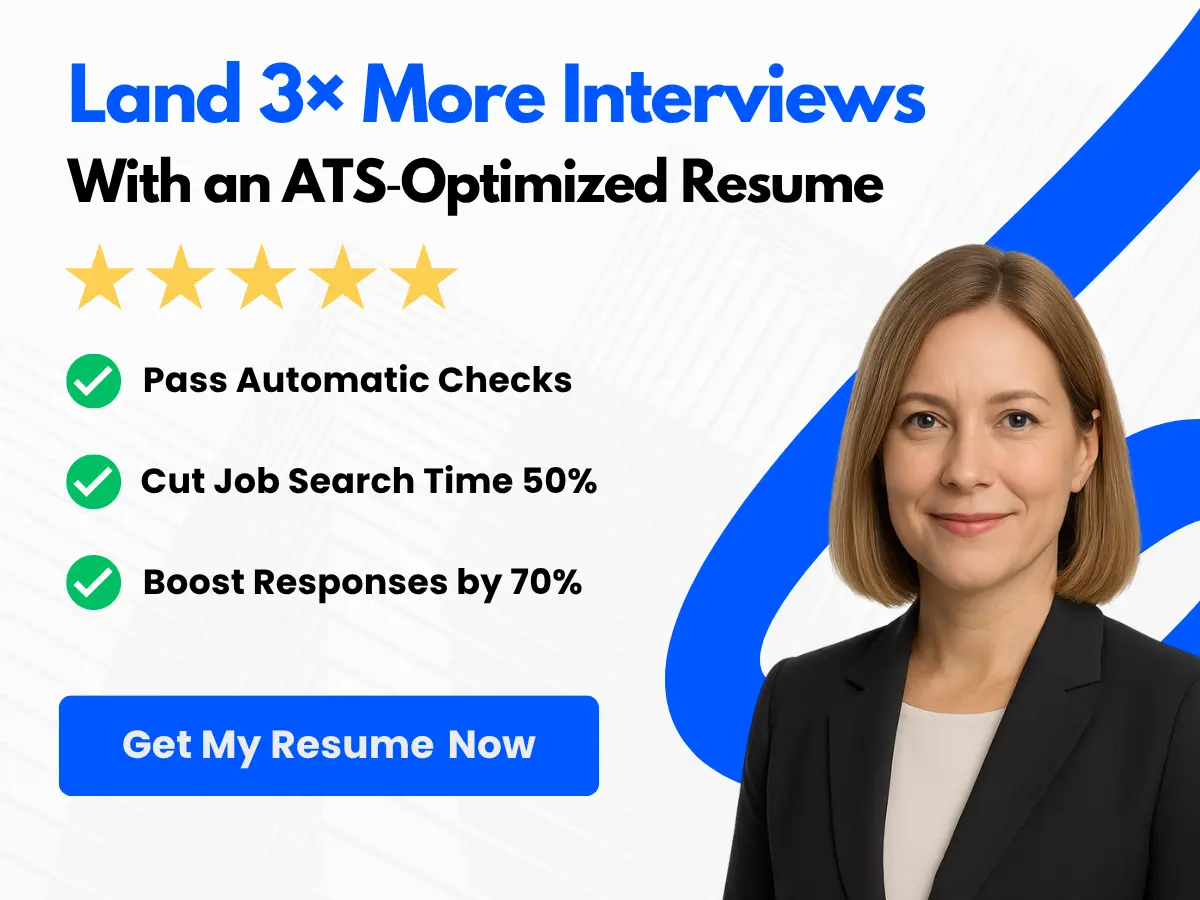A business resume is an essential tool that can make or break a job seeker’s chances of landing their dream job. It serves as a reflection of their skills, qualifications, and experiences, which can convince potential employers that they are the right candidate for the job. Despite its significance, creating a business resume can be a daunting task, especially for those who are new to the workforce or changing careers.
The purpose of this article is to provide job seekers with a comprehensive guide to creating a compelling business resume. This article will explore various tips, tricks, and best practices to help job seekers craft a polished and professional business resume that stands out from the competition. Whether you are a seasoned professional or a recent graduate, this guide is designed to cater to your specific needs and provide you with the tools to create a strong business resume.
The article aims to provide a broad overview of everything job seekers need to know about crafting an effective resume, from choosing the right format to highlighting their skills, experiences, and achievements. In addition to discussing industry standards and best practices, the article will also provide 10+ real-life examples of successful business resumes.
The Business Resume Guide aims to serve as a go-to resource for job seekers looking to create or improve their business resume. By the end of this article, readers will have a clear understanding of what makes a great business resume and the tools to create one that showcases their strengths and experiences effectively.
Formatting and Design
To make your resume stand out from the competition, it’s important to pay attention to formatting and design. This section covers three key elements to ensure your resume makes a lasting impression: selecting the right font, choosing the right template, and creating a visually appealing layout.


A. Selecting the Right Font
The font you choose can have a significant impact on the overall look and feel of your resume. When selecting a font, keep in mind that it should be easy to read, professional, and consistent throughout the entire document.
There are a few classic font choices that are universally accepted in the business world, such as Times New Roman, Arial, and Calibri. However, if you want to stand out a bit more, consider using a font with a modern twist like Georgia, Helvetica, or Proxima Nova.
Regardless of the font you choose, ensure that it is no smaller than 11-point size and that the spacing is appropriate for easy reading.
B. Choosing the Right Template
The template you choose for your resume can have a significant impact on how it is perceived by recruiters and hiring managers. Templates can range from classic and conservative to modern and colorful, so it’s important to choose the right one based on the type of position you’re applying for and your personal style.
Consider using a template that reflects the industry you’re applying to, as some industries may favor certain designs or colors. For example, if you’re applying for a creative role, a template with a pop of color or unique design elements may be appropriate. However, if you’re applying for a more traditional role like accounting, a more conservative template may be favorable.
C. Creating a Visually Appealing Layout
Beyond selecting the right font and template, the overall layout of your resume plays a critical role in catching the eye of recruiters and hiring managers. A visually appealing layout should be easy to read, well-organized, and emphasize your key skills and experiences.


Consider breaking up blocks of text with bullet points or section headers to make it easier for the reader to scan. Utilize white space to ensure that the content is not too cluttered, and use a consistent color scheme and font throughout the document.
A visually appealing layout can make your resume stand out and increase your chances of landing an interview for your dream job.
Essential Elements of a Business Resume
A business resume is a document that highlights your professional accomplishments and showcases your skills and experience to potential employers. It’s important that your resume is well-organized and contains all the essential elements that recruiters and hiring managers expect to see. Here are the essential elements of a business resume:
A. Contact Information Your contact information should be listed at the top of your resume so that employers can quickly and easily get in touch with you. Make sure to include your full name, phone number, email address, and physical address. It’s also a good idea to list any relevant social media profiles or professional website.
B. Professional Summary Your professional summary is a brief statement that summarizes your experience, skills, and career goals. This section should be tailored to the specific job you’re applying for and highlight why you’re the best candidate for the role.


C. Work Experience The work experience section of your resume should include a list of your previous jobs, along with details about your responsibilities and accomplishments in each role. Organize your work experience in reverse chronological order, starting with your most recent position.
D. Education List your educational background, including your degree(s), major(s), and any relevant coursework or certifications. If you don’t have a college degree, you can still include any relevant education or training you’ve completed.
E. Skills Your skills section should list the specific skills and knowledge you’ve acquired over the course of your career. Be sure to include both hard skills and soft skills, as both are important for employers to know about.
F. Achievements This section should highlight your most significant achievements in your previous roles. Quantify your accomplishments where possible, using numbers and statistics to demonstrate your impact on the business.
G. Certifications and Licenses If you hold any relevant certifications or licenses, be sure to list them in this section. This can help to demonstrate your expertise and qualifications for the job.
H. Volunteering and Extracurricular Activities Include any relevant volunteering or extracurricular activities you’ve participated in, as these can demonstrate important skills and qualities like leadership, teamwork, and communication.
In order to make sure your business resume is effective, it’s important to tailor it to the specific job you’re applying for. Customize your resume to highlight your most relevant skills and experience for each job, and make sure to proofread your resume carefully to avoid any errors or typos. With these essential elements, you’ll be well on your way to creating a winning business resume that can help you get the job you want.


Tailoring Your Business Resume
When it comes to creating a business resume, it’s important to tailor it to the specific job and company you’re applying to. Here are some steps you can take to ensure your resume stands out from the rest:
A. Researching the Company
Before you start crafting your resume, it’s important to do some research on the company you’re applying to. This will help you get a better understanding of their mission, values, and culture. You can often find this information on their website, social media pages, or through company reviews online.
B. Identifying Key Traits and Skills Required by the Job
Once you have a better understanding of the company, you can then start identifying the specific traits and skills they’re looking for in their ideal candidate. The job posting will often give you a good indication of what they’re looking for, but you can also do some research on the industry and position to get a better idea.
C. Highlighting your Relevant Experiences and Accomplishments
Finally, it’s important to tailor your resume to match the specific job and company you’re applying to. This means highlighting your relevant experiences and accomplishments that demonstrate the traits and skills they’re looking for. Use concrete examples and data to showcase your achievements and how they align with the company’s needs.
In a competitive job market, tailoring your resume can make all the difference. By doing your research and highlighting your relevant experiences and accomplishments, you can increase your chances of landing your dream job in the business world.
Dos and Don’ts for Writing a Business Resume
When it comes to writing a business resume, there are certain dos and don’ts that you must keep in mind. A well-written business resume can be the key to landing your dream job, so it’s important to get it right. In this section, we will discuss the common mistakes to avoid, best practices for writing a business resume and tips for staying on track.


A. Common Mistakes to Avoid
-
Typos and grammatical errors: A business resume should be error-free. Typos and grammatical errors can make a bad impression on the hiring manager.
-
Being too generic: Avoid creating a generic business resume. Generic language and bullet points will make you blend in with hundreds of other applicants.
-
Lack of focus: Your business resume should be focused on your skills and experience that are relevant to the job you are applying for. Irrelevant information can make it hard for the hiring manager to understand your strengths.
-
Not using keywords: Many companies use applicant tracking systems (ATS) that scan resumes for specific keywords. Not using relevant keywords in your resume can lead to the resume being rejected by the ATS.
-
Listing responsibilities instead of accomplishments: Instead of listing job responsibilities, focus on accomplishments. Highlight what you achieved in your previous role and how it added value to the company.
B. Best Practices for Writing a Business Resume
-
Tailor your resume for the job: Customize your business resume to fit the specific job requirements. This will show the hiring manager that you have the necessary skills for the role.


-
Use bullet points: Use bullet points to make your resume easy to read. Be specific and concise with each bullet point.
-
Quantify your achievements: Use numbers to quantify your achievements. For example, instead of saying you increased sales, say you increased sales by 20%.
-
Use action verbs: Begin each bullet point with an action verb. Action verbs make your resume more engaging and show what you are capable of.
-
Keep it to one page: A business resume should be no longer than one page. Keep it concise and to the point.
C. Tips for Staying on Track
-
Create a strong opening statement: The opening statement is the first thing the hiring manager will read. Create a strong statement that will grab their attention.


-
Stay consistent: Use the same format throughout your business resume. This will make it easy for the hiring manager to read and understand.
-
Proofread: Proofread your business resume multiple times before submitting it. Ask a friend or family member to proofread it as well.
-
Focus on results: Highlight your results and how they contributed to the company’s success. This will show the hiring manager what you can bring to their company.
Dos and Don’ts for Formatting a Business Resume
When it comes to formatting a business resume, there are a few dos and don’ts that can help ensure your document looks professional and polished. In this section, we’ll cover some common formatting errors to avoid, best practices for formatting your resume, and tips for keeping your format consistent.
A. Avoiding Common Formatting Errors
One of the biggest mistakes job seekers make when formatting their resumes is using inconsistent fonts and formatting. To avoid this common error:
- Use one font throughout your resume. It’s best to choose a simple, easy-to-read font like Arial or Times New Roman.
- Keep your font size consistent. Use a font size between 10 and 12 points for the body of your resume and a slightly larger size for headings.
- Use bold, italics, and underlining sparingly. Only use these formatting options to highlight important information and make it stand out.
Another common formatting error is using too much white space or leaving too little white space. To strike a balance:
- Use margins of at least 0.5 inches on all sides of your resume.
- Use bullet points to break up large blocks of text.
- Use headings to organize your content and make it easier to read.
Finally, be sure to save your resume as a PDF file so that your formatting stays intact when you send it to potential employers. Word documents can sometimes be altered and lose their original formatting.
B. Best Practices for Formatting a Business Resume
Now that you know what formatting errors to avoid, let’s talk about some best practices for formatting a business resume:
- Use a professional email address. If your email address is quirky or inappropriate, potential employers might not take you seriously.
- Include a professional summary or objective statement at the beginning of your resume. This should be a brief, compelling statement that showcases your skills and experience.
- List your work experience in reverse chronological order, starting with your most recent job.
- Use measurable achievements to demonstrate your accomplishments at each job. For example, instead of saying “increased sales,” say “increased sales by 15% in Q1 2021.”
- Use keywords from job postings in your resume. This can help your resume get past applicant tracking systems (ATS) and into the hands of human hiring managers.
- Keep your resume to one or two pages. Unless you have a lot of relevant experience, you don’t need a longer resume.
C. Tips for Keeping Your Format Consistent
Consistency is key when it comes to formatting a business resume. Here are a few tips to help you keep your format consistent:
- Use a template. There are plenty of free resume templates available online that can help you ensure consistency in your formatting.
- Use headings consistently. For example, if you use “Work Experience” as a heading, use it consistently throughout your resume.
- Use the same formatting for each job listing.
The Business Resume Guide: 10+ Samples & Examples
Sample Business Resumes
If you’re currently in the job market and embarking on a job hunt, having a great resume is key to making a good impression on potential employers. In this section, we’ve put together four sample business resumes that cover a range of positions and experience levels.
A. Entry-Level Business Resume Sample
If you’re just starting out in your business career, the entry-level business resume sample is for you. This resume emphasizes your education and any relevant internships or work experience you may have. It should highlight your skills and eagerness to learn and develop in your field.
B. Experienced Business Professional Resume Sample
For those who have a track record of success within their field, the experienced business professional resume sample is the way to go. This resume should demonstrate your previous business accomplishments, including any leadership positions you’ve held or projects you’ve managed. It should also showcase any specialized skills or certifications you’ve acquired throughout your career.
C. Business Development Manager Resume Sample
If your goal is to land a senior-level role in business development, the business development manager resume sample is the way to go. This resume should focus on your leadership experience, sales and marketing skills, and your ability to build and maintain relationships with clients.
D. Business Analyst Resume Sample
For those who are analytical and have a keen eye for detail, the business analyst resume sample is a great option. This resume should focus on your experience in analyzing data, problem-solving, and project management. It should also highlight any experience you have with software and technology tools relevant to your field.
No matter what stage of your career you’re in, the right business resume can make all the difference in landing your dream job. Use these sample resumes as a guide as you craft your own and tailor it to the specific job and company you’re applying to. Best of luck on your job hunt!
Business Resume Examples: Achievements and Accomplishments
When it comes to crafting an impressive business resume, highlighting your achievements and accomplishments can make all the difference. However, it’s important to do so in a way that effectively showcases your skills and experiences, without coming across as boastful or arrogant. Here are some tips for explaining your accomplishments on your business resume:
A. Explaining Your Accomplishments
First and foremost, it’s important to frame your accomplishments in a way that demonstrates their relevance to the job you’re applying for. Use specific examples and metrics to show how your actions contributed to specific positive outcomes, whether that be increased revenue, improved efficiency, or strengthened relationships with clients or partners.
Additionally, try to focus on accomplishments that demonstrate transferable skills, such as leadership, problem-solving, and communication. These are qualities that are highly in demand in the business world, and highlighting them can help set you apart from other candidates.
It’s also important to be concise and clear in your language, using active verbs to describe your actions and outcomes. Avoid buzzwords or vague terminology that might not be meaningful to the reader.
B. Examples of Accomplishments to Include on Your Business Resume
When it comes to specific examples of accomplishments to include on your business resume, there are a few key areas to consider:
1. Revenue growth
If you’ve played a role in increasing revenue for a previous employer, be sure to highlight this on your resume. This could include spearheading a successful marketing campaign, increasing sales through strategic partnerships or negotiations, or finding innovative ways to cut costs.
Example: “Led a team that launched a targeted email campaign resulting in 20% increase in revenue within six months.”
2. Process optimization
Streamlining processes and improving efficiency can have a significant impact on a company’s bottom line. If you’ve played a role in identifying and implementing process improvements, be sure to highlight this on your resume.
Example: “Developed and implemented a new project management system resulting in a 30% decrease in project timelines and a 15% increase in team productivity.”
3. Leadership and team building
Demonstrate your ability to lead and inspire a team by showcasing accomplishments that demonstrate your leadership skills. This could include successfully managing a team through a challenging project, mentoring and developing team members, or orchestrating successful team-building activities.
Example: “Led a cross-functional team of 10 in the successful launch of a new product line, resulting in $1M in sales within the first year.”
4. Client or partner relationships
Strong relationships with clients and partners are essential to success in many business roles. If you’ve played a role in building and managing relationships with key stakeholders, be sure to highlight this on your resume.
Example: “Negotiated and secured a multi-year contract with a key client, resulting in a 25% increase in annual revenue.
Business Resume Examples: Skills and Qualifications
When crafting your business resume, it’s important to highlight your skills and qualifications that are most relevant to the position you are applying for. In this section, we’ll discuss how to identify these skills and provide some examples to help you include them on your resume.
A. Identifying Your Skills and Qualifications
To identify your skills and qualifications, start by thoroughly reviewing the job description and requirements. Look for specific skills or qualifications that the employer is seeking, such as proficiency in certain software programs, experience managing teams or budgets, or a particular degree or certification.
Next, think about the skills and qualifications that you possess that align with those requirements. Make a list of these skills, along with any others that may be relevant to the position, such as strong communication skills, problem-solving abilities, or leadership experience.
Remember to also consider transferable skills – those that may not be directly related to the job requirements, but that showcase your abilities in areas such as time management, organization, or adaptability.
B. Examples of Skills and Qualifications to Include on Your Business Resume
Here are some examples of skills and qualifications that you may want to include on your business resume, along with the types of positions or industries where they may be particularly relevant:
-
Project management: This skill is valuable in a wide range of business roles, from marketing and advertising to finance and operations. Be sure to highlight your experience managing projects, including your ability to coordinate timelines, resources, and stakeholders.
-
Data analysis: Many business positions require the ability to work with data to inform decision-making. If you have experience analyzing data using tools such as Excel or SQL, be sure to list this skill on your resume.
-
Customer service: If you are applying for a sales or client-facing role, highlighting your ability to provide excellent customer service can set you apart from other candidates. Examples may include experience handling customer complaints, responding to inquiries, or maintaining client relationships.
-
Leadership: Whether you are applying to manage a team or simply to demonstrate your potential as a future leader, highlighting your leadership experience is important. Examples may include managing a project team, leading a group or committee, or mentoring others.
-
Industry-specific knowledge: Depending on the industry or niche you are applying for, specialized knowledge may be critical to your success in the role. For example, a candidate for a healthcare administration position may want to highlight their knowledge of HIPAA regulations, while someone applying for a position in tech may want to showcase their understanding of programming languages.
Remember, the key is to identify the skills and qualifications that are most relevant to the position and industry, and to highlight them in a way that sets you apart from other candidates. With the right combination of skills and experience, you can create a powerful business resume that demonstrates why you are the best fit for the job.
Cover Letters for Business Resumes
A. Introduction to Cover Letters
A cover letter is a formal letter attached to a resume that serves as an introduction of a job applicant to a potential employer. It is an essential tool for job seekers as it provides a platform to highlight their qualifications and interest in a particular job. A cover letter should be concise, well-written, and tailored to the job description.
B. The Essential Elements of a Good Cover Letter
A good cover letter should consist of the following essential elements:
1. Introduction
The introduction should be captivating and should create a positive first impression. It is essential to start with a brief statement about the job you are applying for and why you are the best fit for the position.
2. Body
The body should explain your qualifications and relevant experiences. It is important to highlight your skills and achievements that fit the job description. You may also explain how your experiences can contribute to the growth of the company.
3. Closing
In the closing, you should express your interest in the company and the job position. You may also request an interview or meeting to discuss your qualifications further.
C. Sample Cover Letters for Business Resumes
To help you create an effective cover letter, here are some sample cover letters for business resumes:
- Cover Letter for Business Development Manager
- Cover Letter for Financial Analyst
- Cover Letter for Marketing Manager
- Cover Letter for Sales Executive
- Cover Letter for Human Resources Manager
These sample cover letters demonstrate how to incorporate the essential elements of a good cover letter while tailoring it to each job description. Remember to also customize each cover letter to the company and its culture.
A well-crafted cover letter can greatly improve your chances of getting noticed by potential employers. It is an opportunity to showcase your qualifications and interest in a particular job. Use the tips provided and the sample cover letters to create a compelling cover letter that best represents you and your qualifications.
Proofreading and Editing Your Business Resume
As you work on creating a strong business resume that highlights your skills, experience, and achievements, it’s important to remember that even the smallest mistake can make a big difference in how you’re perceived by potential employers. To help you avoid common typos and errors, and make sure your resume is polished and professional, here are some tips for proofreading and editing your business resume.
A. Common Typos and Errors to Watch Out For
-
Spelling mistakes: Even one spelling mistake can undermine your credibility and attention to detail. Double-check the spelling of words, especially industry-specific terms and job titles.
-
Grammatical errors: Poor grammar can also harm your professional image. Pay special attention to subject-verb agreement, verb tenses, and punctuation.
-
Formatting inconsistencies: Consistency in formatting, font sizes, and bullet-point styles will help give your resume a polished and professional look.
-
Incorrect contact information: Make sure your phone number, email address, and other contact information are accurate and up-to-date.
-
False or misleading information: Never include false or misleading information on your resume. This can be grounds for disqualification or dismissal later in the hiring process.
B. Best Practices for Proofreading and Editing Your Business Resume
-
Take a break before proofreading: To catch mistakes, take a break from your resume before proofreading. Come back to it with fresh eyes and a clear head.
-
Use a checklist: Create a checklist of common mistakes that you’re prone to make, and go through each item on the checklist to ensure you’ve addressed it in your resume.
-
Read your resume out loud: By reading your resume out loud, you’ll be able to catch errors that might not be apparent when reading silently.
-
Have someone else review it: Ask a friend, family member, or colleague to review your resume. A fresh set of eyes can catch mistakes you might have missed.
-
Look for consistency and clarity: Make sure your resume is consistent in formatting, tone, and voice. Also, ensure that your resume is easy to read, with clear and concise language that effectively communicates your skills and accomplishments.
Proofreading and editing your business resume is a crucial step in creating a strong professional image and demonstrating attention to detail. By avoiding common typos and errors and following best practices, you can ensure that your resume is polished, professional, and reflects your qualifications and achievements.
Related Articles
- Information Technology (IT) Cover Letter: Samples & Tips
- Tricky Interview Questions and How to Answer Them in 2023
- Warehouse Packer Resume: Top Examples & Guide 2023
- Top Organizational Skills to Include on Your Resume in 2023
- The Best 10 Customer Service Jobs for 2023








